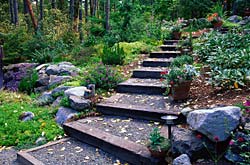Powdery Mildew: More than a Mere Dusting
See if We Have Top-Rated
Mold Specialists in Your Area

There are several different types of fungus that fall under the term "powdery mildew". They are all related, however, and are all prevented and treated in the same manner. Powdery mildew appears first as white spots and later looks like a thin coating of dust or dirt. It not only looks bad, but it is also unhealthy for the plant. If you believe one or more of your plants have powdery mildew, there are a few things you can do to combat the problem (and a few to help keep the problem from rising again).
Effects of Powdery Mildew
Powdery mildew is responsible for a variety of plant ailments. In leaves it can cause stunting, yellowing, and distortion. It can decrease the size and aesthetic appearance of fruit. It robs nutrients and, in the most extreme cases, can be fatal to some plants.
While there are many plants that powdery mildew can live on, some are more susceptible than others. Fruit trees are quite susceptible as are African violets, lilacs, roses, begonias, and phlox. Grapes and many vegetables are also high on the list of host plants. Thankfully, each strain of powdery mildew is limited in the types of plants it can grow on. This means that a fungus that infects one plant is often unable to spread to the other types of plants around it.
Controlling Powdery Mildew
Once a plant is infected, the best plan of action is to treat it with a fungicide. Most home improvement stores will carry a few varieties of fungicide that are each designed to work on specific plants and specific species of fungus. It is important to read the label carefully to make sure that you are purchasing the right tool for the job.
Don't live with mold in your house! Use this link for professional
Mold RemovalSince fungi are very dependent on water, humidity is a factor in where powdery mildew can show up. Reducing the humidity around indoor plants is an effective tool in mildew management.
Preventing Outbreaks
Powdery mildew spreads through spores. These spores can be found on leaves that are living as well as on fallen leaves. The best way to prevent future infections is to collect and destroy diseased leaves, which will in turn destroy the spores.
Between growing seasons, spores can survive very harsh conditions. Even if you live in a climate where the winters are very cold, it is best to get rid of the diseased leaves yourself and not leave the job of spore control to mother nature.
When growing large numbers of plants, it is a good idea to swap the location of a variety that has been infected with a species that is known to be resistant. This rotating between growing seasons will reduce the likelihood of infection in the coming year.
Keeping a watchful eye on your plants is another good way to keep powdery mildew in check. When the first signs of it appear, you can literally nip it in the bud!
More Tips & Advice For Your Home
- Related Articles
- Recent Articles

